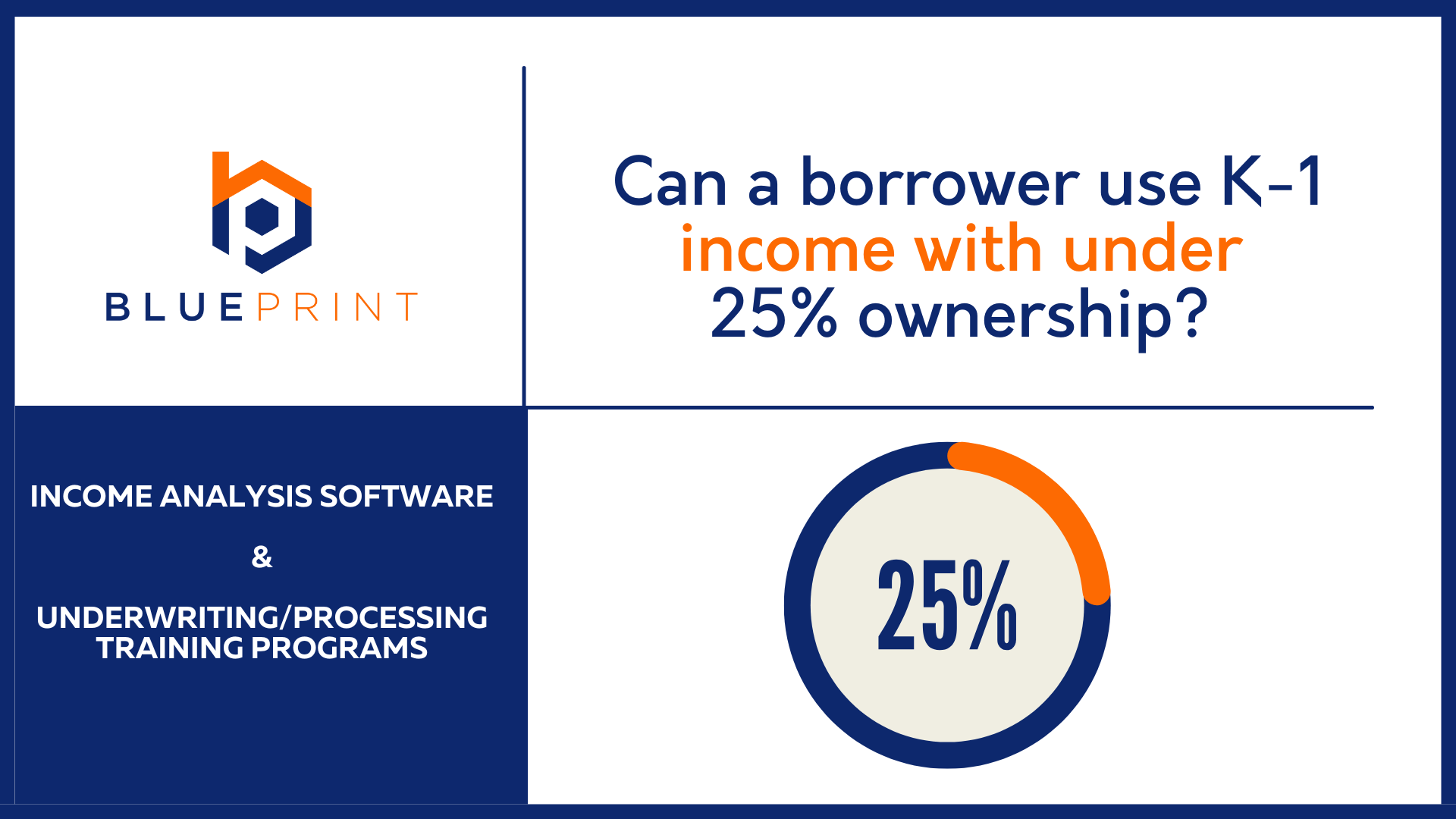Can you use K1 income with less than 25% ownership?
K-1 income(loss) is generated from standard business structures defined by the IRS which are Partnerships using the IRS 1065 tax form and the S Corp using the IRS 1120S tax form . These entities both use an IRS form K-1 as one of the ways they transfer income (or losses) from the business to the individual owner (or owners) of each.
Things to consider
While the mortgage business clearly defines self employed income as when a borrower has 25% or greater ownership in any business entity. The K-1’s issued by the IRS do not make that distinction. The IRS is reporting any income (or loss) whether you own 1% or 100% of a K-1 business.
For income qualification purposes on the mortgage business K-1 income, even that earned from less than 25% ownership ,is still able to be used as income to help pay the mortgage. Where things get confusing to many in the industry is they apply the incorrect rules to that source of income being classified as “self employed” and the rules that go with it. This income in fact is not self employed, but listed as “other” by both Fannie Mae.
How to determine income
First, review the borrower’s personal tax returns. On Schedule E page 2 it will list all of the K-1’ that both tax payers are listing as income (or losses) to their income. For each borrower on the loan get all K-1’s listed to review the percentage of ownership listed on the K-1s.
Second, if the K-1 lists over 25% ownership follow the guidelines for self employment as it applies to your borrower. If the K1 shows less than 25% ownership the income becomes limited to what is found and supported by the K-1 only.
Third, add this income as other income on the application. If you add this income under the employment section and send it to an AUS that way it will apply and require a different risk profile.
Forth, K-1’s under 25% do require a minimum history of two years to qualify.
FHA/VA/USDA
These government sponsored programs tend to be very conservative in their approach to income. Based on that I would not use the K-1 < 25% income here. In my experience with all three agencies, if you call them and ask about things not in the regulations, they tend to tell you no because they have no supporting evidence. I have seen many audits come back that underwriters took some conforming liberties with the government agencies.
Summary
The K-1 forms used seem to cause the industry to apply “one set of rules” to adding this income to the borrower which is incorrect. Be sure to teach and define the 25% and above, and below 25% standard correctly for your borrower. The rules outlined today are focused on Fannie Mae.
Guideline References
Fannie Mae B3-3.1-09, Other Sources of Income
Want to go deeper?
We have prepared an in depth training video on K1 income to help you handle it like a pro. More detail, more explanation, more examples. Click the button below and we will send it to you.

